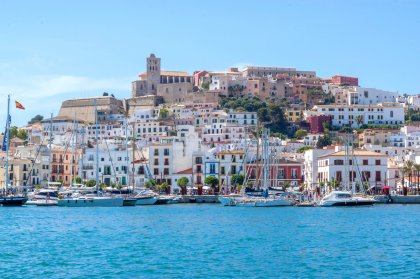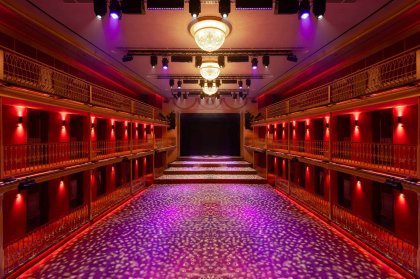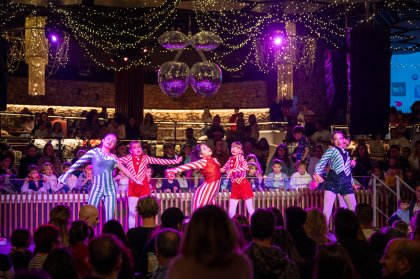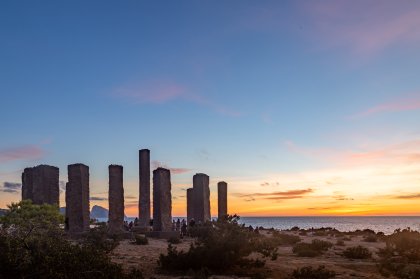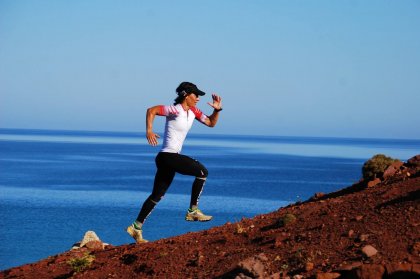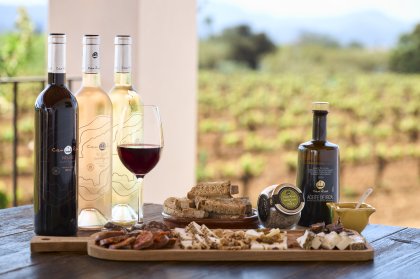The drive to the (very) small village of Santa Agnes (Sant Ines) is beautiful. There are no beaches nearby and perhaps because of this, the area remains completely untouched by tourism. Rolling hills covered in pine, valley fields of almond and carob trees (often with the farmers working away beneath the sun as you drive by). The roads are quiet so driving slowly, breathing in the peacefulness is effortless and invigorating.
Suddenly, the road straightens and about a kilometer in the distance, you see some white buildings. Santa Agnes. There's a junction, roads off to the left and to the right, signposted to another secret community, Sant Mateu at this point. If you turn here, towards Sant Mateu, just a few hundred metres along, a rickety old wooden sign proclaims "Es Pujol - Free Entry". You've arrived at an experience.

Toni comes out to greet you. He has lived on Ibiza for years and perhaps more attention grabbing is the fact that he lives as the old Ibicenco's lived. This House Museum, containing over 2,000 relics, many thought to date back over 2,500 years is his home.
Whilst not a huge fan of history, this author thought she knew quite a lot about the old Ibicenco way of life but it transpires she was still in nappies compared to Toni - and Andrea, his fellow guide, who offers tours in English, French and Dutch - long pants of historical knowledge.
Did you know the Ibicenco's grow and process their own tobacco and indeed how it is done?
Do you know the 'how' of making espadrilles from cactus (and indeed the origins of the cactus)?
Do you know how they used to take the honey from the wonderfully intricate clay beehives?
Do you know why the beams of the roof throughout the house are made from Sabina Pine, except for the kitchen roof?

The learning curve was extraordinary and fascinating, as was Toni and Andreas passion for sharing it with their guests (us mere mortals seeking a different day out)
Wine urns thought to be over 2,000 years old, turtle shells (turtles used to live in abundance in the Mediterranean - I didn't know that either. The islanders, apparently with some reluctance and regret were forced to fish for them and eat them during times of great hardship) Taking a break, Toni offers some freshly shelled almonds to nibble on, or perhaps dried fig? We sit in the ancient kitchen, on tiny stools whilst the fire in the corner keeps us warm.
Room after room of amazing relics and between them both, Andrea and Toni have a story to tell about seemingly all of them. Carob seeds that were used to measure the weight of goods - each carob seed thought to weigh the equivalent of todays 'carat'. The stories abound.

Island honey, homemade hierbas (an island liquor) are just some of Toni's offerings; achievements of his days pottering about maintaining the museum between visitors.
I spent two hours at the museum but could have spent weeks learning. Not the dry learning of school years but the fascinating applicable learning of how Ibiza was shaped; how people survived and what they fed on, what governed their day to day priorities, the relationships between the men and women of society.

Instead I shall go back again for another visit. First though I need to get some chickens - Toni taught me they are great for getting rid of ant infestations. I've a few friends who will love me for that gem.
If you would like to book a visit, Es Pujol Museum (Museo Etnografico ('specific human culture') de Santa Agnes) is open year round. There is no website but you can call Andrea direct on 696-630-443 and request a tour in Spanish, English, Dutch or French.

If you enjoy your tour, please do leave a donation!
Opening hours are 10am-1pm and 5pm-8pm.
